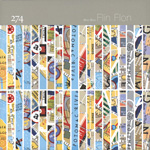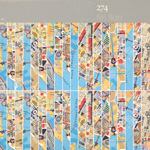Teen-Beat 274.
No.
1+
50+
100+
150+
200+
250+
300+
350+
400+
450+
500+
-0
-1
-2
-3
-4
-5
-6
-7
-8
-9
0-- ¤
1-- ¤
2-- ¤
3-- ¤
4-- ¤
5-- ¤
2024
2023
2022
2021
2020
2010+
2005+
2004
2003
2002
2001
2000
1999
1998
1997
1996
1995
1994
1993
1992
1991
1990
1989
1988
1987
1986
1985
1984
ARTISTS
Aden
Air Miami
Andrew Beaujon
AKA JK
Autoclave
The Ballet
Barbara Manning
Bastro
Bells Of
Blast Off Country Style
Bloody Amateur
Bloodthirsty Butchers
Borthwick / hollAnd
Bossanova
Bratmobile
Bridget / Kathi / Doug
Butch Willis
Cath Carroll
Tha Cheeky Bastid
Circus Lupus
Clarence
Cobalt
Containe
Coral
Cotton Candy
Courtney Love
Crispy Ambulance
Currituck Co.
Draw the Kitten
DUSTdevils
DVS
Eggs
Fang Wizard / Party Milk
The Feminine Complex
Flin Flon
Flowers of Discipline
Flying Saucer
The Fontaine Toups / TFT
Fred & Ginger
Gamma Rays
Gastr del Sol
The Gollipopps
Grenadine
Helter Skillet
hollAnd
horse ing TWO=HIT
Hot Pursuit
In Camera
In Interview
Jeff Zitofsky
John Lindaman
Jonny Cohen / Love Machine
Juliet Swango
Jungle George & The Plague
Justin Chearno
K-Stars
Kevin Hewick
The Krokodiloes
The Last Wave
Latin Hustle
The Long Goodbye
Los Marauders
Loudest Boom Bah Yea
Lu
Luna
Mark Robinson
Maybe It's Reno
Mirah & Ginger
MMM's Live Archive
Naomi Wolff
The Naysayer
Nethers
New Carrollton
No Trend
Olympic Death Squad
The Pacific Ocean
Panax
Party Milk / Fang Wizard
Phil Krauth
+/- {Plus/Minus}
Pocket Rockets
The Positions
The Project
Que Verde
Rhonda Harris
Rive Gauche
Robert Schipul/Ascension
Robert Zitofsky
Romania
The Rondelles
The Ropers
Scaley Andrew
The Screamer
S.C.U.D.
Section 25
Sexual Milkshake
Sharky Favorite
Sisterhood of
Convoluted Thinkers
The Soft Rock
Somerville Speakout
Sprites
Stereolab
Stick Insect
The Still
Superconductor
Synthetic Socks
Talk It
Teenage Gang Debs
Tel Aviv
Thirsty Boys
Tracy Shedd
True Love Always
Tsunami
The Tube Bar
Tuscadero
Uncle Wiggly
Unrest
Velocity Girl
Versus
Viva Satellite!
Volumia
Vomit Launch
Wall Drug
Whysall Lane
William & Vivian
HELLO
FORMAT
Anniversaries
Cassettes
Catalogues
Compact Disks
Compilation Albums
Downloads
Drinkware
Film
Holiday Cards
Posters
7" Vinyl
Teen-Beat Originals
Tee-Shirts
10" Vinyl
12" Vinyl
ET CETERA
About / Contact
Design
Gift Certificates
Home
Items in Stock
Never Released
Pals and Chums
Shopping Cart
Teen-Beat Newsletter
Tag Sale

Boo-Boo and Boo-Boo (Version)
CD
Upper Ferry
Shuffle Board
Mistaken Point
Jumpers
Floods
Trinity
Virgin Arm
Leading Tickles
Happy Adventure
St. Patricks
VINYL LP (VERSION)
SIDE ONE
Jumpers (Version No.2)
Floods (Version)
Leading Tickles (Version)
Happy Adventure (Version)
St. Patricks (Version)
SIDE TWO
Upper Ferry (Version)
Jumpers (Version No.1)
Trinity (Version)
Mistaken Point (Version)
Virgin Arm (Version)
Shuffle Board
Compact Disc (CD) ($14,44)
10-panel folder, in jewel case
with black tray.
Download (FLAC/MP3) ($9,90)
Listen and purchase FLAC or MP3 files from our friends at Midheaven.
Purchase
Listen
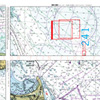



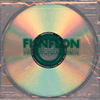

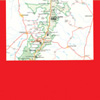



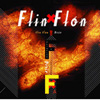









Boo-Boo
CD cover
Boo-Boo (Version)
LP jacket
LINER NOTES
PLAYERS
Matt Datesman, drums
Natalie "Nattles" Mencinsky, bass guitar
Mark Robinson, vocals, guitar
PRODUCED BY
Mark Robinson
and D. Trevor Kampmann
RECORDED BY
D. Trevor Kampmann,
at 11th & P, Washington, D.C., USA
March 17 and May 2, 1999
MASTERED BY
Charlie Pilzer,
at Airshow, Springfield, Virginia, USA
DESIGN, CARTOGRAPHIC IMAGES,
AND PHOTOGRAPHY
Mark Robinson, Teen-Beat Graphica
FONTS
Minion
and Helvetica Neue
GERMAN TRANSLATION
Nancy Marion
FRENCH TRANSLATION
Lisa Goldstein
ENGLISH TRANSLATION
Jonathan Cohen
WHALE IMAGE
courtesy New England Whalers (1972)
TEEN-BEAT COMMUNICATIONS LOGO
designed by Teen-Beat Graphica (1984)
ET CETERA
All songs composed by trio Flin Flon: Mark Robinson, Matt Datesman, Natalie Mencinsky (BMI)
The letter "B" is printed on the CD. "B" for the second Flin Flon album release.
"This recording should be played at a volume comfortable for the listener."
The track "Shuffle Board" is identical on both the CD and the LP "Version", while the rest of the tracks are different versions, mixes, or re-mixes.
Audio captured & assembled on an Apple® Macintosh G3 with the assistance of Pro Tools®.
Visual designed on an Apple® Power Mac 7500 with the assistance of QuarkXPress® and Adobe® Illustrator.
SLEEVE NOTES
From Wax Cylinders to Mini-Disc and MP3
A short history of audio formats
Imagine life without records, tapes or CDs. Imagine no walkman, no hi-fi, no car stereo. You could hear music only by way of live performance. Perhaps an orchestra in a concert hall, a skillful band at a night club, a child singing in the streets. This is what it was like prior to the advent of audio recording in 1877.
In the late Nineteenth century, popular music was distributed to the public via sheet music. If you didn't know how to play the piano, you could purchase a player piano which would play by itself. This was perhaps the first home
entertainment center. When inventors found a way to capture sound, capture the sound of not only voice but of a musical performance, they revolutionized the way in which people listened.
The first popular format for mass produced recorded music was wax cylinders (invented by T. Edison in 1888). Cylinders were not unlike the later common phonograph as a needle would pick-up the audio signal from grooves etched into a wax lacquer. As new listening devices were invented, record companies would release their artists' music on all of the available formats. They would even promote the addition of new formats with the idea of increasing sales. In the 1950s, albums were released simultaneously on the Columbia Records backed 12" LP (long player) and the RCA backed 7-inch 45 EP (extended play). In the 1960s and 1970s, it was reel to reel tape, the eight track cartridge and cassette. In the '80s and '90s compact disc, digital audio tape, mini-disc, and digital cassette. Today we have MP3, a technology which lets you load a digital music file onto your computer.
To come up with something more interesting for the listener, we have come up with a new idea in audio programme formatting.
Flin Flon
"Boo-Boo"
& "Boo-Boo (version)"
In the Spring of 1999, Matt Datesman, Mark Robinson, and (the singularly named) Nattles composed and digitally recorded fourteen pieces of music using analog instruments.
Ten of these songs were chosen to represent the band on their second full-length document.
Why not just produce one format? We realize that there are currently at least two popular
formats that make sense for the Flin Flon album; the digital compact disc and the analog long-player. We have mixed and edited each song (for the CD) and then re-edited and re-mixed "versions" for the vinyl LP, making them two completely different albums. Instead of manufacturing the same thing twice, we are offering the listener two different options.
an excerpt from "Leading Tickles"
relay transmission signal
A.M. F.M. shortwave tone
implant seduction dial
come clean, reverse your smile
Textbook Example: Fission
turn-off that television
cut your cable
De cylindres en cire � Mini-Disc et MP3
Une histoire br�ve des audio-formats
Imaginez-vous la vie sans disques, sans bandes magnétiques, sans disques compacts. Imaginez-vous qu'il n'y pas de walkman, ni d'haute fidélité, ni de stéréo dans votre voiture. Vous ne pourriez entendre que de la musique jouée en public. Peut-être un orchestre dans un music-hall, un groupe dynamique dans une boîte de nuit, un enfant qui chante dans la rue. C'était comme �a avant la venue de l'audio-enregistrement en 1877.
Vers la fin du dix-neuvi�me si�cle, on vendait la musique populaire sous forme de partitions. Si on ne savait pas jouer du piano, on achetait un piano mécanique. En développant des moyens d'enregistrer le son, particuli�rement le son des interprétations musicales, les inventeurs ont révolutionné la fa�on dont les gens écoutaient la musique.
Les enregistrements musicals étaient fabriqués en série pour la première fois sous forme de cylindres en cire (inventés par Thomas Edison en 1888). Comme le phonographe, qui n'était pas encore venu, les cylindres en cire contenaient des sillons desquels un saphir captait des
audio-signaux. Comme des appareils nouveaux étaient inventés, les disques sortaient sous tous les formats disponibles.
Avec l'adjonction de ces formats nouveaux, les ventes étaient en hausse. Pendant les années 1950, des albums sortaient simultanément en microsillons chez Columbia Records et en disques doubles chez RCA. Pendant les années 1960 et 1970, ils sortaient en bandes bobine-à-bobine, en bandes à 8 pistes, et en cassettes. Avec les années 1980 et 1990, on voyait la venue des disques compacts, des mini-discs, et des cassettes digitales. Aujourd'hui il existe le MP3, avec lequel on peut installer un fichier de musique digitale dans un ordinateur.
Pour produire quelque chose de plus intéressant pour le public, nous avons ajouté une nouvelle idée à l'histoire des audio-formats.
Flin Flon
"Boo-Boo"
et "Boo-Boo (version)"
Au printemps de 1999, Mark Datesman, Mark Robinson, et (l'exceptionnellement appelé) Nattles ont composé et enregistré digitalement quatorze morceaux de musique avec les instruments analogiques.
Dix de ces chansons étaient choisis pour représenter le groupe sur leur deuxième
document de long métrage.
Pourquoi ne produire qu'un format? A présent, les deux audio-formats plus populaires sont le disque compact digital et le microsillon analogique. Nous avons fait du mixage et mis au point chaque chanson (pour le CD) et puis nous avons remis au point et fait du remixage pour le microsillon. Le résultat: deux albums totalement différents. Au lieu de fabriquer le même produit deux fois, nous offrons deux options différentes au public.
un extrait de "Leading Tickles"
relayez le signal de transmission
A.M. F.M. le ton à ondes courtes
implantez le cadran de séduction
soyez honnête, renversez ton sourire
Un exemple classique: La fission
éteignez cette télévision
coupez ton c�ble
Von Wuchszylinder zu Mini-Disk und MP3
Eine kurze Geschichte der Tonstrukturen
Bitte stellen Sie ein Leben ohne Schallplatten, Kassetten oder Cds vor. Stellen Sie auch vor, daß es auch keine Walkman, keine Hi-fis oder keine Autostereoanlagen gibt. Man konnte Musik nur bei liven Veranstaltungen hören: vielleicht ein Orchester im Konzertsaal, eine gute Band im Klub, ein in der Straße singendes Kind. So war es vor dem Aufkommen der Aufnahme im Jahr 1877.
Im späten neunzehnten Jahrhundert wurde populäre Musik per Notenblätter verteilt. Falls man das Klavier nicht spielen könnte, könnte man ein "Player Piano" kaufen, d.h., ein Klavier, das sich selbst spielen kann. Dies war vielleicht das erste Tonwiedergabesystem. Als die Erfinder einen Weg der Ton einer Stimme
sowohl auch einer musikalischen Veranstaltung aufzunehmen fanden, wurde die Art und Weise revolutionisiert, in denen man Musik zuhört.
Die erste populäre Struktur der hergestellten Musik war der Wuchszylinder, der von Thomas Edison 1888 erfinden wurde. Wuchszylinder waren ähnlich den späteren Schallplatten, in dem einen Tonabnehmer empfängt den Hörempfang von den Schallrillen, die in einem Wuchslack geätzt wurden. Als neuen Geräte erfunden wurden, veröffentlichten die Musikfirmen die Musik ihrer Künstler in jeder Struktur. Neue Strukturen wurden geworben, um mehr zu verkaufen. In den 50er Jahren
wurden Schallplatten gleichzeitig hergestellt, von Columbia Records mit der 12-inch Schallplatte, was ein LP genannt wurde (Engl. "Long player", "lange Spielzeit"), und von RCA mit der 7-inch Schallplatte, was ein EP genannt wurde (Engl. "Extended play", "erweiterte Spielzeit"). In den 60er und 70er Jahren gab es Tonband, 8-Track Kassetten und Kassetten. Neuere Strukturen seit den 80er Jahren sind Compact-Disk, DAT, Mini-Disk und digitale Kassetten. Heute gibt es MP3, eine ttechnologische Erfindung, die einem digitale Musikdaten im Computer speichern läßt.
Um etwas Interessanteres für den Zuhörer zu erwerben, schufen wir etwas neues für das Audio-Programme-Formatting.
Im Frühling 1999 Matt Datesman, Mark Robinson und die einzelgenannte Nattles
komponierten und aufnahmen digital mit analog instrumenten vierzehn Stücken.
Flin Flon
"Boo-Boo"
und "Boo-Boo (version)"
Zehn dieser Lieder wurden als repräsentativen Werken der Gruppe auf ihrem zweiten Album ausgewählt.
Warum nich nur auf eine Struktur veröffentlichen? Wir wissen schon, daß es zur Zeit zwei populären Strukturen gibt, die zum Album Flin Flons passen: die digitale Compact-Disk und die analoge Schallplatte. Wir schnitten jedes Lied einmal für die CD und noch einmal für die Schallplatte zusammen, deshalb gibt es für die Schallplatte Versionen. Da sind die Zwei vollkommen verschiedene Albums. Anstatt dasselbe zweimal herzustellen, bieten wir dem Zuhörer zwei verschieden Wahlen.
Eine Ausnahme von "Leading Tickles"
Relais - Sendung - Wellensignal
AM, FM, Kurzwellenton
Impfe Verführungswahlscheibe ein
Gesteh alles ein, Dreh dein Lächeln um
Ein Textbuchbeispiel: Fission
Mach den Fernseher zu
Schneid deinen Kabel
REVIEW
"Boo-Boo, the new album by Flin Flon, comes in two flavors. Besides the CD, there's a vinyl LP edition, Boo-Boo (Version), with different mixes of every song. Both are on singer/guitarist Mark Robinson's label Teenbeat. The basic sound of the material doesn't differ in any major way. Grooves lurch like a cheetah at top speed, sparkling with just enough guitar to keep from touching earth. The difference is in the structures of the tracks. On the CD, they're songs first and foremost, developing logically from introduction to conclusion and propelled by the rhythm section's post-disco jerk. The LP version is nothing but that propulsion, quick and jolting, edited down to rhythm patterns that dispense with the extraneous gestures of songwriting. The band are fast and wiry, but the beat always seems to be leaning to one side. It's the same kind of rhythmic sleight of hand that drove Joy Division and early New Order -- bands whose musical ideas turn up all over Boo-Boo, from the ultra-dry recording of Matt Datesman's hi-hat-focused drumming to the way Robinson has largely ditched chords in favor of darting around the bass lines, one or two spindly notes at a time. Meanwhile, Robinson's lyrics have become a deliberately meaningless excuse to sing; the words to "Jumpers" seem to have been lifted from a dental surgeon's notebook, and the chorus of "Upper Ferry" goes "34/34/34."
The mercurial Robinson has been heading toward Boo-Boo's unalloyed groove for a while now. His best-known band, Unrest, first hinted at it with a string of extraordinary singles and their last two studio albums, Imperial f.f.r.r. and Perfect Teeth. They drew on the fluid repetitions of the New York funk group ESG and the artists on the British post-punk label Factory, molding them into songforms of their own, where the rhythm section mostly just provided support for Robinson's forceful, clean-toned guitar strumming. Unrest mutated into the chewier Air Miami, after which Robinson formed Flin Flon.
That's just one genealogy for Flin Flon, but there's an alternate chain of development whose relics have just resurfaced. Before Unrest were a groove band, they were an oddball neighbor of the DC-area punk scene. The two fun, spazzy late-'80s Unrest albums that document these period have been out of print for close to a decade. But No. 6 Records has now reissued both of them. Malcolm X Park sounds like the product of a band set on avoiding stylistic continuity at all costs -- it's a wonderfully (and terribly) messy one-band mix tape, with frenetic punk, acoustic abstractions, faux art-film music, a straight-faced cover of Kiss's "Strutter," a piano-and-drum drone piece, a sweet little love song, and an inept Elvis impersonation invading one another's personal space. That was followed by Kustom Karnal Blackxploitation, on which Unrest can't quite decide whether they're a sex-crazed power-rock trio or a sex-crazed joke about '70s wah-wah funk. Song titles include "Black Power Dynamo" and "Kill Whitey." Still, parts of it are awfully clever. The chorus of "Teenage Suicide" conflates a joke from the movie Heathers with the title of Robinson icon Sammy Davis Jr.'s autobiography: "Teenage suicide/Don't do it/Teenage suicide/Yes I can!"
Before Unrest, there was Unrest, the 1974 album by the English art-rock group Henry Cow that gave Robinson's group its name. Henry Cow were one of the first bands to be both seriously interested in making the distinctions between rock and improvisation and "serious" compositional music irrelevant and seriously equipped to do it. Although its members (including guitarist Fred Frith and bassoonist Lindsay Cooper) tended to overindulge in number-crunching time signatures, they were subtle players more interested in supporting one another than in showing off. Unrest, newly remastered and reissued on East Side Digital, was recorded when they found themselves in the studio with only half an album's worth of material and punted. The second half of the disc is based on a series of textural improvisations (menacing buzz, woodwind whir, bash-and-scrape freakout) arranged into complicated, coherent pieces with the help of tape manipulation and overdubs.
Unrest doesn't sound a thing like Boo-Boo, but they're related, most of all in the artists' slipperiness. Whatever you think I am, they argued, I'll refuse to be that -- even to the point of not releasing "definitive" versions of their albums. (Henry Cow's 1973 Legend is now available in two different mixes too.) Both mutated from paradigm to paradigm too quickly to be attached to any one genre, until incrementally they'd built styles of their own. And though Flin Flon and Henry Cow share little in terms of sound, the two groups illuminate each other from a distance as cousins whose shared bloodline is a hidden one."
- Douglas Wolk, Smallmouth,
in the The Boston Phoenix

RELEASE DATE
August 16, 1999
FORMAT
compact disc
vinyl L.P.
LENGTH
CD:
34 minutes, 20 seconds
10 tracks
LP (version):
31 minutes, 8 seconds
11 tracks
CATALOGUE No.
Teen-Beat 274
DETAILS
LP
August 16, 1999
1,081 pressed on black vinyl.
JACKET:
full-colour plus PANTONE 8002 (metallic ink) on matte coated stock.
LABEL:
green ink on white paper.
Polybag:
records inserted and sealed into 4 mil. polybags by hand at Teen-Beat 267.
FIRST CD PRESSING
August 16, 1999
1,948 pressed.
INSERT:
10-page folder, tray card, both full-colour front plus PANTONE 8002 (metallic ink) (one side colour and one side black and white).
JEWEL CASE:
with black tray.
LABEL:
green with white text.
SECOND CD PRESSING
March 20, 2000
1,000 pressed.
LABEL:
white with green text (reversed from first pressing).
LP:
Mastered by
Acoustech, California.
Printed by
Dorado Press, California.
Pressed by
Record Technology, California.
CD (first pressings):
Printed by
Dorado Press, California.
Pressed by
Nimbus, Ruckersville, Virginia.
CD (second pressing):
Printed by
Dorado Press, California.
Pressed by
Failsafe, Illinois.
DISCOGRAPHY
SINGLES
ALBUMS
A-O.K.
Boo-Boo
Boo-Boo (Version)
Chicoutimi
Swift Current
Dixie
Dixie (Version)
Et Cetera
COMPILATIONS
1998 Teenbeat Sampler
1999 Teenbeat Sampler
2000 Teenbeat Sampler
2001 Teenbeat Sampler
2002 Teenbeat Sampler
2003 Teenbeat Sampler
Teen-Beat Subscribers' CD, 2003
2004 Teenbeat Sampler
Teen-Beat 20th Commemorative
Teen-Beat Subscribers' CD, 2005
Teen-Beat Subscribers' CD, 2006
Teen-Beat No.1 Record Label
2010 Teen-Beat / Other Music Sampler
Teen-Beat Holiday Card 2010/2011
SOUNTRACKS
CNN/Anderson Cooper theme song
ALSO
Teen-Beat 13th Anniversary Celebrations
Teen-Beat 14th Anniversary Celebrations
Teen-Beat 15th Anniversary Celebrations
Teen-Beat 17th Anniversary Celebrations
Teen-Beat 18th Anniversary Celebrations
Teen-Beat 20th Anniversary Celebrations
Flin Flon Pocket Catalog Postcard
Teen-Beat 21st Anniversary Celebrations
Pocket Catalog [set of four]
RELATED
Air Miami
Grenadine
True Love Always
Unrest
SONGS
Argyle
Argyle (Version)
Anglo Tignish
Anglo Tignish (Version)
Annapolis Royal
Annapolis Royal (Version)
Black Bear
Bonaventure
Bonnie (Lamb)
Bonnie (Lamb) (Version)
Buffalo Narrows
Cape Smokey
Capstick
Cavendish
Cavendish-Capstick (Version)
Cardigan
Cardigan (Version 1)
Cardigan (Version 2)
Chicoutimi
Coddles
Coddles (Version)
Colgate
Darlings
Flatbush
Flin Flon
Flin Flon (Version)
Floods
Floods (Version 1)
Floods (Version 2)
Happy Adventure
Happy Adventure (Version)
Inverness
Inverness (Version)
Jumpers
Jumpers (Version No.1)
Jumpers (Version No.2)
Kamloops
Kamloops (Version)
Leading Tickles
Leading Tickles (Version)
Levis
Linkletter
Linkletter (Version)
The Lookoff
Medicine Hat
Mistaken Point
Mistaken Point (Version)
Mistassini
Moose Jaw
Odessa
Red Deer
Rimouski
Roman Valley
Rossignol
Rossignol (Version)
St. Patricks
St. Patricks (Version)
Shuffle Board
Skir Dhu
Skir Dhu (Version)
Swift Current
Swift Current (Version 1)
Swift Current (Version 2)
Trafalgar
Trafalgar (Version)
Trinity
Trinity (Version)
Ukraina
Upper Ferry
Upper Ferry (Version)
Virgin Arm
Virgin Arm (Version)
Whitehorse
Yellowknife
